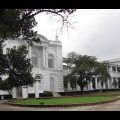This is an audio version of the Wikipedia Article:
Anushilan Samiti
00:03:57 1 Background
00:05:49 2 Timeline
00:05:58 2.1 Origins
00:08:28 2.2 Nationalism and violence
00:13:39 2.3 World War I
00:17:30 2.4 After the war
00:20:56 2.5 Final phase
00:22:50 3 Organisation
00:22:59 3.1 Structure
00:25:10 3.2 Cadre
00:27:59 4 Ideologies
00:28:08 4.1 Indian philosophies
00:30:08 4.2 European influences
00:31:36 4.3 Okakura and Nivedita
00:32:41 4.4 Later influences
00:33:31 5 Impact
00:33:40 5.1 Police reforms
00:37:30 5.2 Criminal Law Amendment 1908
00:39:30 5.3 Defence of India Act
00:41:18 5.4 Rowlatt act
00:42:51 5.5 Bengal Criminal Law Amendment
00:43:36 6 Influence
00:43:45 6.1 Revolutionary nationalism
00:45:36 6.2 Indian independence movement
00:47:07 6.3 Social influences
00:49:35 6.4 Communism in India
00:51:22 7 In popular culture
Listening is a more natural way of learning, when compared to reading. Written language only began at around 3200 BC, but spoken language has existed long ago.
Learning by listening is a great way to:
– increases imagination and understanding
– improves your listening skills
– improves your own spoken accent
– learn while on the move
– reduce eye strain
Now learn the vast amount of general knowledge available on Wikipedia through audio (audio article). You could even learn subconsciously by playing the audio while you are sleeping! If you are planning to listen a lot, you could try using a bone conduction headphone, or a standard speaker instead of an earphone.
You can find other Wikipedia audio articles too at:
https://www.youtube.com/channel/UCuKfABj2eGyjH3ntPxp4YeQ
You can upload your own Wikipedia articles through:
https://github.com/nodef/wikipedia-tts
“The only true wisdom is in knowing you know nothing.”
– Socrates
SUMMARY
=======
Anushilan Samiti (Ōnūshīlōn sōmītī, lit: body-building society) was a Bengali Indian organisation that existed in the first quarter of the twentieth century, and propounded revolutionary violence as the means for ending British rule in India. The organisation arose from a conglomeration of local youth groups and gyms (Akhara) in Bengal in 1902. It had two prominent, if somewhat independent, arms in East and West Bengal identified as Dhaka Anushilan Samiti centred in Dhaka (modern day Bangladesh), and the Jugantar group (centred at Calcutta) respectively.
From its foundation to its gradual dissolution during the 1930s, the Samiti challenged British rule in India by engaging in militant nationalism, including bombings, assassinations, and politically-motivated violence. During its existence, the Samiti collaborated with other revolutionary organisations in India and abroad. It was led by nationalists such as Aurobindo Ghosh and his brother Barindra Ghosh, and influenced by philosophies as diverse as Hindu Shakta philosophy propounded by Bengali literaetuer Bankim and Vivekananda, Italian Nationalism, and Pan-Asianism of Kakuzo Okakura. The Samiti was involved in a number of noted incidences of revolutionary attacks against British interests and administration in India within the decade of its founding, including early attempts to assassinate Raj officials whilst led by the Ghosh brothers. These were followed by the 1912 attempt on the life of the Viceroy of India, and the Sedetious conspiracy during World War I led by Rash Behari Bose and Jatindranath Mukherjee respectively.
The organisation moved away from its philosophy of violence in the 1920s, when a number of its members identified closely with the Congress and Gandhian non-violent movement, but a section of the group, notably under Sachindranath Sanyal, remained active in revolutionary movement, founding the Hindustan Republican Association in north India. A number of Congress leaders from Bengal, especially Subhash Chandra Bose, were accused by the British Government of having links with, and allowing patronage to, the organisation during this time.
The organisation’s violent and radical philosophy revived in the 1930s, when it was involved in the Kakori conspiracy, the Chittagong armoury raid, and other attempts against the administration in British India and Raj officials.
Shortly after its inception, the organisation became the focus of an extensive police and intelligence operation which led to the founding of the Special branch of the Calcutta Police. Notable officers who led the police and intelligence operations against the Samiti at various times included Sir Robert Nathan, Sir Harold Stuart, Sir Charles Stevenson-Moore and Sir Charles Tegart. The threat posed by the activities of the Samiti in Bengal during World War I, along with the threat of a Ghadarite uprising in Punjab, led to the passage of Defence of India Act 1915. These measures enabled the arrest, internment, transportation and execution of a number of revolutionaries linked to the organisation, which crushed the East Bengal Branch. In the aftermath of the war …








